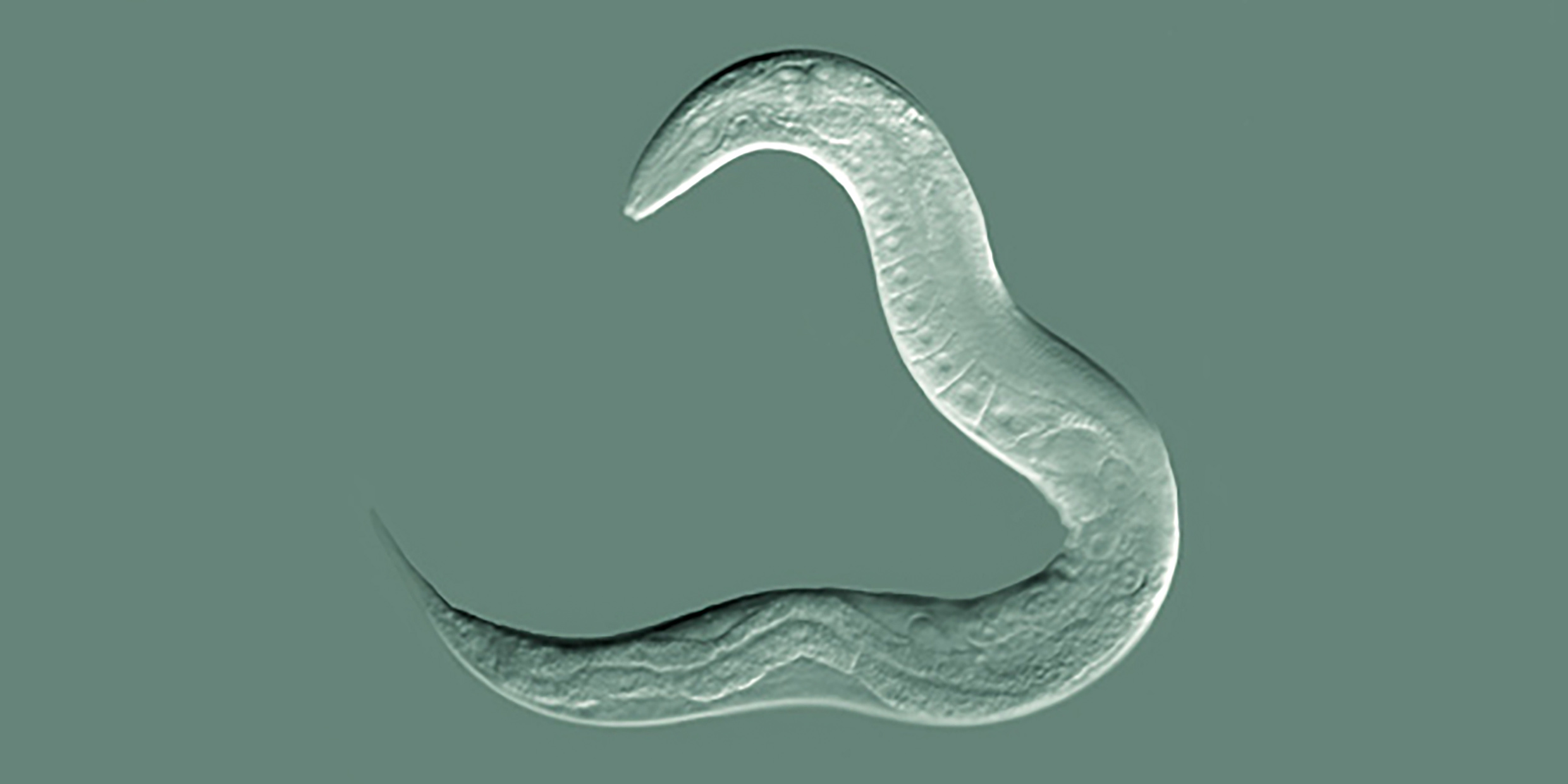Originally published 2 May 2000
“How do you make a worm?”
“What sort of worm?”
“I’m not choosy.”
“How about Caenorhabditis elegans, a tiny little worm that lives in the soil, about as big as this letter i.”
“That’s not much of a worm.”
“It’s worm enough. It has a nervous system, with a sort of primitive brain. It is capable of rudimentary learning. It produces sperm and eggs, and reproduces. Later, it grows old and dies. In all of these things, it is much like ourselves.”
“Well, OK. How do you make a Caenorhabditis elegans?”
“Like any other organism, C. elegans is made of cells. Exactly 959 cells. About 300 of these are neurons — nerve cells — which make the worm sensitive to temperature, taste, smell, and touch. C. elegans has no eyes, but it might respond slightly to light. There are 81 muscle cells that enable the worm to move from place to place. And, of course, there’s all the other cells needed to make up the body of the worm.”
“Less than a thousand. That’s not a lot of cells.”
“Not a lot compared to, say, the 50 trillion cells in the human body. Of course, it is the very manageable number of cells that makes C. elegans such a useful research animal. It is about as simple as an organism can be and still have lots of similarities with human biology.”
“OK, we need 959 cells to build a worm.”
“You can find the complete parts list on the Internet, and you can actually see the cells at www.wormbase.org.”
“So how do you make a worm?”
“To tell you the truth, I haven’t a clue how to make a worm. The truly wonderful thing is, worms make themselves.”
“Whoa. How is that possible? Automobiles don’t make themselves. Computers don’t make themselves.”
“Nevertheless, like every other living thing, worms do it. In every one of those 959 cells there are identical copies of worm DNA, carried on six chromosomes, six little wound-up bundles of DNA. Something like 17,800 genes, coded as 100 million paired chemical units of just four kinds, along the DNA double helix. It’s a four-letter code for making a worm.”
“You can give me a blueprint for making a house, but still I would have to make it. Houses don’t make themselves. Someone — or something — has to take that sequence of chemical units and use it as a guide for making the worm.”
“I grant you this is difficult to grasp. But take my word for it, the worm does it.”
“The worm? Wait a minute. The worm can’t execute the blueprint. The worm is the product of the blueprint. The worm ain’t there till the job is done.”
“True enough. And we are facing here the deepest and most marvelous mystery in the science of life, the miracle of development. As the DNA spins and weaves, fabricating proteins, it is controlled by its environment, and by what has already been fabricated. In the case of C. elegans, the process has been observed in exhausting detail: One cell fissions into two, then four, then — ultimately all 959.”
“If the same genetic code is in every cell, why do cells diverge as they split? Why are there nerve cells or muscle cells or structural cells?”
“The earliest cells in the process — the so-called stem cells — have the potential to become any other kind of cell. What they become depends upon which genes are expressed at each stage of development, and that in turn is sensitive to the environment. It’s a bootstrap process. The worm pulls itself into being.”
“I still can’t get a fix on what’s happening. The DNA is not quite a blueprint, because there’s not a building contractor. It’s not quite a computer program, because there’s no hardware to run it.”
“Here’s how geneticist Enrico Coen puts it in his book, The Art of Genes: ‘The software, the program, is responsible for organizing hardware, the organism. Yet throughout the process, it is the organism in its various stages of development that has to run the program.’ In other words, the hardware runs the software, whilst at the same time the software is generating the hardware.”
“Sounds terribly circular.”
“I agree. The metaphor is unsatisfactory. Metaphorical thinking is always perilous. There is really nothing else quite like what happens in the developing organism. But that, my friend, is how to make a worm.”



